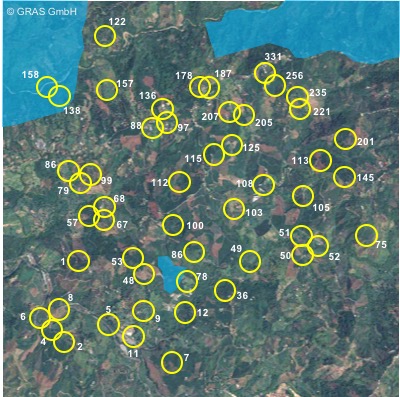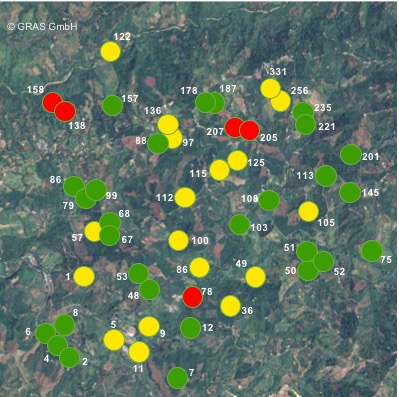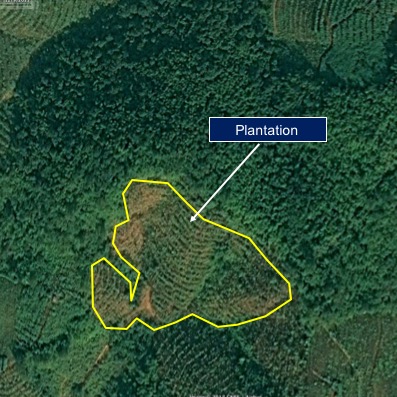Risk Monitoring of a Coffee Cooperative
GRAS is used to monitor sustainability risk of smallholder coffee production
Coffee producers and well known brands globally are committed to sustainable coffee production, where smallholder production makes up a large part of the total production. GRAS supports the efficient monitoring of smallholder production and supports the trustworthy communication of compliance to consumers and partners.
Due to often heterogeneous structures, a large number of suppliers and a lack of technical support for farmers, smallholder production bears challenges regarding monitoring of production practices. GRAS is able to overcome these by applying efficient and reliable automated methodologies to check land use change activities and violations against protected areas to identify sustainability risk hotspots in the supply base and focus improvement measures where they are really needed.
The GRAS approach for the monitoring of smallholder production
Assumed that the location of the farms are known, GRAS can conduct a semi-automated sustainability risk assessment for the direct surrounding of the farm houses. The analysis is based on predefined criteria, e.g. a specific cut-off-date for deforestation activities or the overlap with protected areas. A standardized radius is applied, depending on the production structure of the specific assessment region.
In a second step, the GRAS Index s calculated for each farmer, representing the sustainability risk of the surrounding area. The ranking and mapping of the farmers then allows the identification of hotspots of most vulnerable farmers. Farmers with a high sustainability risk can then be included into further assessment and specific measure can be conducted to set up improvement plans for the specific regions, verify the compliance of the specific production area or to exclude them from the supply base.
Further steps could be a detailed analysis of the explicit plantation outline to verify that the farmer is not producing on land that was deforested after the cut-off-date. The outlines of the plantations can be collected with a field collection app, developed by GRAS. The detailed analysis then includes the analysis of high resolution satellite images and the processing of EVI time series, among other measures. This allows the highest degree of reliability of the results.
Analysis results can be used for internal risk management and external communication
The results of the GRAS analysis can be incorporated into an easy-to-use online tool that can perfectly be used to communicate the compliance of the supplying farmers to the end consumers of the coffee products according to the individual commitments. The interactive tool can also be set up to facilitate an efficient internal management of the production area, smoothly incorporate the results into internal work flows and databases.
Find out more about how GRAS supports the monitoring and mapping of supply bases here.

Step 1: A semi-automated sustainability analysis of a defined radius for each farmer

Step 2: Hotspot analysis and ranking of all farmers

Step 3: Detailed assessment of the plantation outilines for farmers with a high sustainability risk